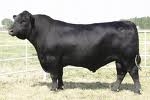
While NZ's beef exports are small compared to other countries of the world, other large country inflences will affect the market and future prospects.
It appears from this article that things are not well in Argentina's beef market and supply and demand should help keep prices firm for a while yet.
After heavy culling as a result of a droughts in the cow areas of the NI last year, numbers in NZ will be short as well.
The dairy expansion historically helped beef production with the retention of Friesian bull calves, but the increased use of Jersey genetics has slowed the growth from that source.
Argentines have lost their title as the world’s biggest beef eaters after the worst drought in 70 years and government export limits led ranchers to reduce the number of cattle on the Pampas. Consumption is slumping to 57.3 kilos (126 pounds) a year, the lowest since 1958 and below neighboring Uruguay, where each person consumes as much as 60 kilos annually, according to beef industry associations in the two countries.
The decline in cattle numbers will “be even worse next year” because fewer calves were born during the two-year drought that ended in 2009, said Ricardo Buryaile, a rancher and congressman who heads the Agriculture and Livestock Committee in the Lower House. The reduced herd caused shipments from what was once the world’s biggest beef exporter to plunge about 50 percent this year, allowing Uruguay to pass it as a global supplier.
Argentine cattle prices almost doubled in 2010 to 6.67 pesos ($1.67) per kilo from 3.46 pesos at Argentina’s largest market, the Mercado de Liniers in Buenos Aires. Argentina’s drought, which lasted from 2007 until early last year, parched pastures, cut wheat production to its lowest since 1975 and reduced soybean harvests by as much as a third. Faced with a lack of forage and export controls that prevented prices from reflecting international values, ranchers sent a record number of animals for slaughter last year.
During the past two years, the national herd dropped 15 percent to 49 million head, data produced by the Buenos Aires- based Argentine Agricultural Sanitary Agency show. Argentina’s agricultural ministry this year increased minimum cattle slaughter weights in a bid to curb declining supplies. The weight was raised to 165 kilograms on May 1 from a 154-kilogram limit set on April 1.
Brazil, the world’s second-biggest beef producer and the leading exporter, processed 8.95 million tons in 2009, according to the Washington-based U.S. Department of Agriculture. In Uruguay, consumption ran at an annualized rate of 58.2 kilos per person in the first eight months of this year, and may rise to as much as 60 kilos per person by the end of 2010. After overtaking Argentina as a beef exporter, Uruguay now ranks sixth in the world, with Argentina seventh, according to Miguel Jairala, a statistician at the Buenos Aires
3 Comments
This is an example of the macro economic factors in play which I have been trying to highlight in previous postings. The US beef herd is at 39 year lows, Brazil down also. Sheepmeats supply is contracting in every major producing country(unfortunately here as well). This is at a time when Asian markets are increasingly coming into play and demand in tradition Europe,UK,US fairly stable.It does not take a rocket scientist to realise those with supply should prosper. Whilst I accept returns to the farmgate in the recent past are not what they need to be that is merely gazing in the rearview mirror. I have doubled my beef numbers this year in full anticipation of firm markets for the forseeable future.
It wasn't that long ago that the Argentine beef farmers were doing really well and the Kirchner Govt tried to milk (mixed metaphor) them for all they were worth. Note how cheap the meat is (US? $1.67 per kilo) and how much meat the average South American (58kg!) eats per annum. I was amazed at meal servings in Uruguay, huge portions with almost no vegetables and never a salad.
And the dollar will rise and we wont be much better off.
We welcome your comments below. If you are not already registered, please register to comment.
Remember we welcome robust, respectful and insightful debate. We don't welcome abusive or defamatory comments and will de-register those repeatedly making such comments. Our current comment policy is here.